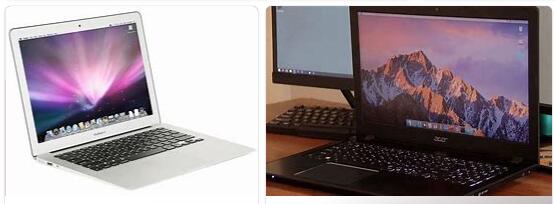MAC address (According to abbreviationfinder, MAC stands for Media Access Control or media access control, for its acronym in English). In computer networks, the 48-bit identifier (6 hexadecimal blocks) that uniquely corresponds to a network ethernet is called a MAC address.
MAC
It is also known as the physical address as it identifies network devices. It is individual, and unique to each device, determined and configured by the IEEE (last 24 bits) and the manufacturer (first 24 bits) using the OUI.
Most of the protocols that work at layer 2 of the OSI model use one of the three numbers managed by the IEEE: MAC-48, EUI-48, and EUI-64 which have been designed to be globally unique identifiers. Not all communication protocols use MAC addresses, and not all protocols require globally unique identifiers.
MAC addresses are globally unique, since they are written directly, in binary form, into the hardware at the time of manufacture. Because of this, MAC addresses are sometimes called “Burned -in Addresses” (BIA).
If we look at the definition as each hexadecimal block is 8 binary digits (bits), we would have:
6*8=48 unique bits
MAC operates at layer 2 of the OSI Model. To do this, frames are generated, small blocks of information that contain in their header the MAC addresses corresponding to the sender and receiver of the information.
Applications
Most of the time it is not necessary to know the MAC address , neither to set up a home network, nor to configure the Internet connection. But if we want to configure a Wi- Fi network and enable a hardware filtering system on the access point (which will only allow access to the network to specific network adapters, identified by their MAC), then we need to know that address. This means of security can be considered as a reinforcement of other security systems, since theoretically it is a unique and permanent address, although in all operating systems there are methods that allow network cards to identify themselves with MAC addresses other than the real.
The MAC address is used in various technologies including:
- Ethernet
802.3 CSMA/CD802.5 or 4 Mbps or 16 Mbps Token Ring networks802.11 wireless networks (WIFI).
- ATM
Obtaining MAC in different OS
Windows 2000/XP/Vista/7/8
In Windows, the MAC Address is known as the Physical Address. The easiest way is to open a command line terminal (“cmd” from Start Run) and there use the command: ipconfig /all.
UNIX and GNU/Linux and Mac OS X
In the *nix family environment, you will need to open a terminal and run the command: ifconfig -a. This shows us the interfaces followed by their respective MAC addresses under the ether heading. (Note: to run “ifconfig” you must have root privileges: “sudo ifconfig -a”).
Symbian S60
You can obtain the MAC address of the WLan and Bluetooth interfaces: To do this, type the following codes from the home screen: *#62209526# (that is, the keys that form *#mac0wlan#) for Wlan and *#2820# (ie *#bta0#) for bluetooth.
Windows Mobile 6
You can get the MAC address of the WiFi device by going to Connection Manager =Wifi =Settings – WLAN Settings – Connection Status. It appears under the heading “MAC Address”.
